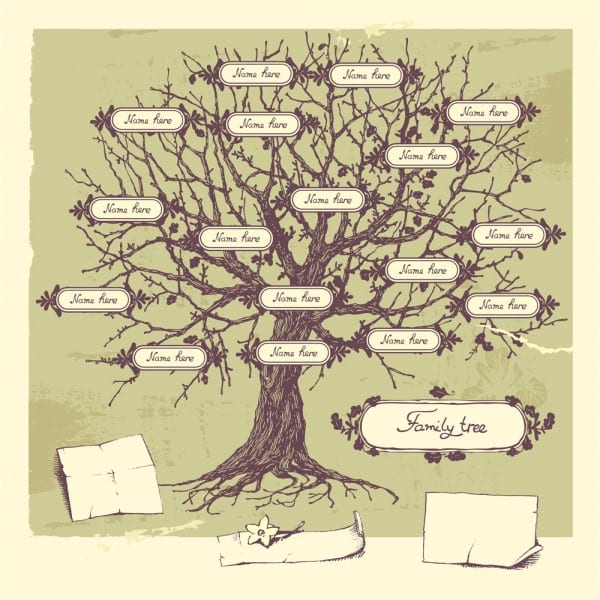Have you realized that you need to have some organization techniques to manage your ancestors? Your family tree can become confusing and/or your research strategies become random, rather than focused, when you do not have some kind of Master List. Here is how to use a 4 or 5-generation-chart for your research.
In this chart, you fill in the first line on the extreme left side with your name and details. I will assume that you will be the #1 person. However, if you wish, you might use your mother as the first person, or your father, or one of your grandparents as the first person. Regardless of whom you start with, you will fill in the known and estimated dates and places of their birth, marriage, death, burial. Then you move on to the right, filling in the name of their parents, and their details. Always use the maiden name of the women in your tree, if known to you. Repeat with each person – move to the right again, with their parents and their details. In this way you will end up with 32 different surnames on the extreme right side of your chart, of a 5-generation form.
Some people color-code the father's side of the family one color, and mother's side a second color as a way to help keep the surname lines separated clearly. Of course, you also have numbers for each person since ancestor charts such as these always have a unique number printed for every individual. You are your Father will be written on the top as #2, Mother below as Father's Father on top (one column over) as #4, Father's Mother just below as #5, and so on. This is a standardized method of numbering ancestors in this "pedigree" format for recording your family and details.
You may find you are able to go back 6 or 8 or more generations, but the chart only goes to 5 generations. How to go further back than that? If the 5th generation ancestor on your chart is #32 (an example only), then a second chart will start with #32 in the #1 position, and you will note that information on the new chart. At that point, this second chart will be all about #32's Father, Mother, and their parents. You may be able to only fill in 2 generations before you are blocked by your lack of knowledge. For other ancestors, there may be significant research done in the past which details the lives of their parents and more ancestors. This is particularly true if you find that your line comes down from a celebrity or important figure, or a group such as the Mayflower ship passengers, or one particular religious community.
Once you have your 5-generation chart(s) filled out as much as possible, look for gaps in your knowledge. Take another piece of paper for any individual, and write down what you do know. Also write down those details you need to find out. Brainstorm where you may find those details, to the best of your ability. Pick one ancestor to search at a time, or one family group (mother, father, children), and do this preliminary work. I use a highlighter for a family or individual I am researching, and switch to another colour when I am ready to move on to another individual/family. Use a system that works best for you as there is no one best system – we are all so individual.
Start as you mean to continue and write down all the source materials you have that provide proof of details about your ancestors. The best sources are those documents which were made at the time of an event – such as a birth registration or parish register of birth and baptism, or a death registration or burial certificate, or a marriage registration, or other such original event document. If you do not have such proof, what DO you have? Perhaps birth, marriage, or death details are found on military papers, or naturalization records, or on an education record, or a pension application form, or in an obituary published in the local newspaper. Any of these documents may be very useful to help prove details, so add those details right away. Use a guide as to how to write down the document – called how to Cite your Sources.
Writing out your 5-generation chart, you will have a basic Master List of your ancestors, and you can begin to organize your research. Many people begin to search from the people closest to them, moving to generations further away. Others prefer to pick one line only, perhaps their mother’s surname line, and research that as far as possible, then pick another line and do the same. There is no best way to do this, simply look at your list of ancestors and decide where to start. Remember also to look for stories or historical events which may have impacted on your ancestor(s). These personal and social details will enrich your family tree. One person at a time, one detail at a time, you will build a fascinating look into your past.

